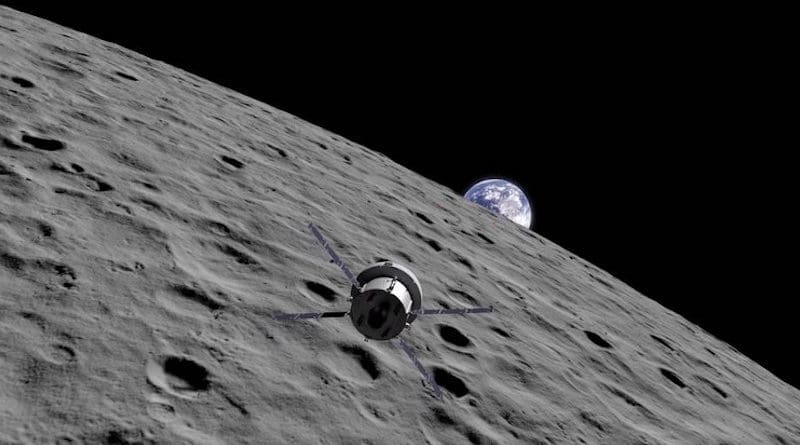NASA Seeks New Partners To Help Put All Eyes On Artemis Moon Missions
NASA is seeking new partners to help the agency tell the story of human exploration at the Moon with the Artemis program in ways that engage, excite, and inspire a worldwide audience. Through the end of this decade, NASA will explore more of the lunar surface than ever before and will establish a sustainable human presence with Artemis in preparation for future human missions to Mars.
The agency has released an Announcement for Proposals calling for submissions of potential partnerships to visually bring the public along for the ride in new ways, starting as early as a trip around the Moon with astronauts on the Artemis II mission, targeted for 2023. Proposals are due by 11:59 p.m. EST, Dec. 11, 2020.
“We’re looking for partners to use advanced technologies, imagery applications and approaches that will go beyond our standard coverage on NASA TV,” said NASA Administrator Jim Bridenstine. “We want to capture the awe of Apollo for a new generation – the Artemis Generation. Just as people were glued to the TV 50 years ago as astronauts took the first steps on the Moon, we want to bring people along in this new era of exploration.”
Spacecraft are routinely outfitted with NASA cameras for technical and operational support, such as inspecting solar arrays, and footage from these cameras typically is used to supplement mission coverage on NASA Television. This announcement primarily focuses on proposals that include potential innovative technologies or hardware, such as cameras or other equipment that a partner might fly on the mission to augment existing NASA imagery.
Examples could include hardware such as 360-degree field-of-view camera systems, virtual reality, advanced imagery compression to improve image quality over limited bandwidth communication links; unique storytelling and distribution methods, 4K and Ultra HD camera systems, robotic “third-person” views, crew handheld camera systems, image stabilization, small portable cameras, or other concepts that provide more engaging imagery or deliver a custom viewer experience.
NASA said it welcomes responses from broadcasters, studios, the aerospace industry, academic institutions, nonprofit organizations, and others, as well as collaborations between multiple entities for creative proposals to help acquire or use NASA’s live or recorded imagery to help tell the story of exploring the Moon.
Submissions should outline the proposed public engagement project, potential to enhance public understanding of the Artemis program, distribution mechanisms to reach large audiences, requested support from NASA in the form of existing media or access to facilities and personnel, and a description of unique video, audio or imaging hardware, software, or related technology a partner might seek to place on or in NASA’s Orion spacecraft or other NASA equipment, facilities or infrastructure.
Proposals for storytelling collaborations to reach large portions of the public or new audiences using ground-based filming or imagery, and which do not require partner-provided equipment, may be submitted through NASA’s standard film and television collaboration process.
NASA’s Artemis I mission is an uncrewed flight test that will launch Orion on the agency’s Space Launch System rocket to orbit the Moon and return to Earth. On Artemis II, Orion will carry a crew of astronauts around the Moon and back, and Artemis III will land the first woman and next man on the lunar surface. Subsequent missions will explore more of the Moon and test the technologies and procedures needed for human exploration of Mars.

